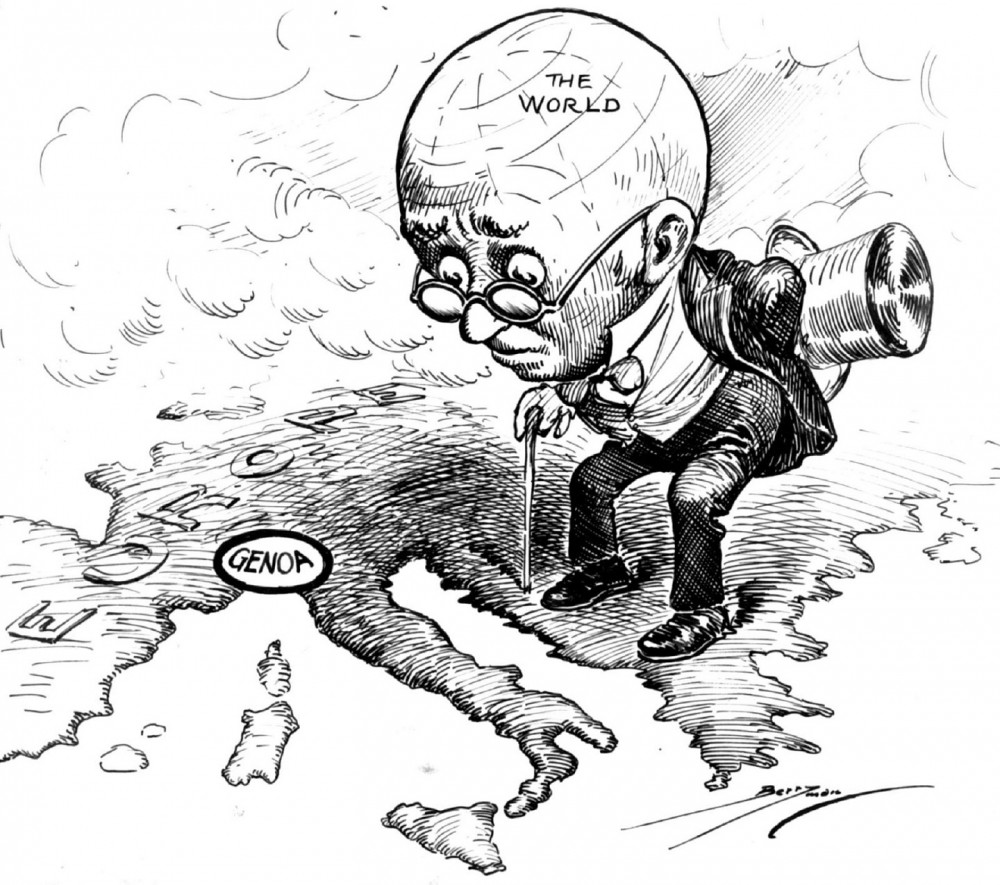
The article analyses the Poland’s policies with regard to the Russin Socialist Federation Soviet Republic and the Ukrainian SSR during the preparation and holding the Genoa Conference (April 10 — May 19, 1922). At present, researches on the hybrid warfare practices are of vital importance, and such practices had already been developed since the beginning of the twentieth century. Of particular importance are the practices when the states have diplomatic relations with each other and do not carry out warfare activities de jure, however, they create a permanent state of military threat to one another and formally deny their own responsibility for creating such a state. Within the context of international politics in Europe, this problematics has not yet been elaborated. This research chronologically covers the period from January 1922 to the end of May of the same year. Additionally, the analysis subject includes the Romania’s policy with regard to the Soviet Republics during the same period, because its policy was conditioned by coordinated actions with Poland. The study is based on the analysis of the operations reports of the Counter-Banditry Division of the All-Ukrainian Extraordinary Commission for the Central Committee of the Communist Party (Bolshevics) of Ukraine regarding the cross-border situation between the Ukrainian SSR and the territories of Poland and Romania (in particular, Eastern Galicia — occupied by Poland, and Bessarabia — occupied by Romania). A peculiarity of the research approach is a retrospective review of these operations reports in the context of the diplomatic struggle during the 1922 Genoa Conference. In parallel with the analysis of Poland’s policies regarding the territories with the Soviet social order, an analysis of the actions of the Soviet delegation during the international conference in Geneva was carried out, including consequences of the Treaty of Rapallo, which was concluded between the RSFSR and Germany. Considerable attention is paid to the analysis of the international political situation of Poland, the RSFSR, and the Ukrainian SSR on the eve of the Genoa Conference and its transformation as a result of the conclusion of the Rapallo Treaty on April 16, 1922. In the same context, an analysis of the transformation of Poland’s policy on the Soviet cross-border territories was carried out. The problematics of the use of Ukrainian People’s Republic military forces and the White Guards by coordinated efforts of Poland and Romania in creating a permanent military threat to the Soviet territories was singled out. The study established that the states tried to avoid the long-term war, given the negative track record of World War I, amidst the global capitalist economy of 1920s. Therefore, they tried to concentrate their major efforts on changing their international political position by means of diplomatic actions, which were reinforced by methods of economic pressure and permanent military threat as a conclusive argument. Poland’s policy of creating a permanent military threat to the RSFSR and the Ukrainian SSR was unsuccessful because of Poland’s complicated political situation and the aggressive actions of the RSFSR to exploit systemic contradictions in the international politics of Europe after the First World War.
Source: Nazarchuk O., Satskyi P. (2020). Hybrid Signs of Poland’s Confrontation with the Ukrainian SSR and Soviet Russia during the Genoa Conference (1922). European Historical Studies. №16: 93-106
Source web-site: https://drive.google.com/file/d/1lKnOu-vvbFgRXj91dE83Sp_Bte7ybKp4/view
Number of views: 2411